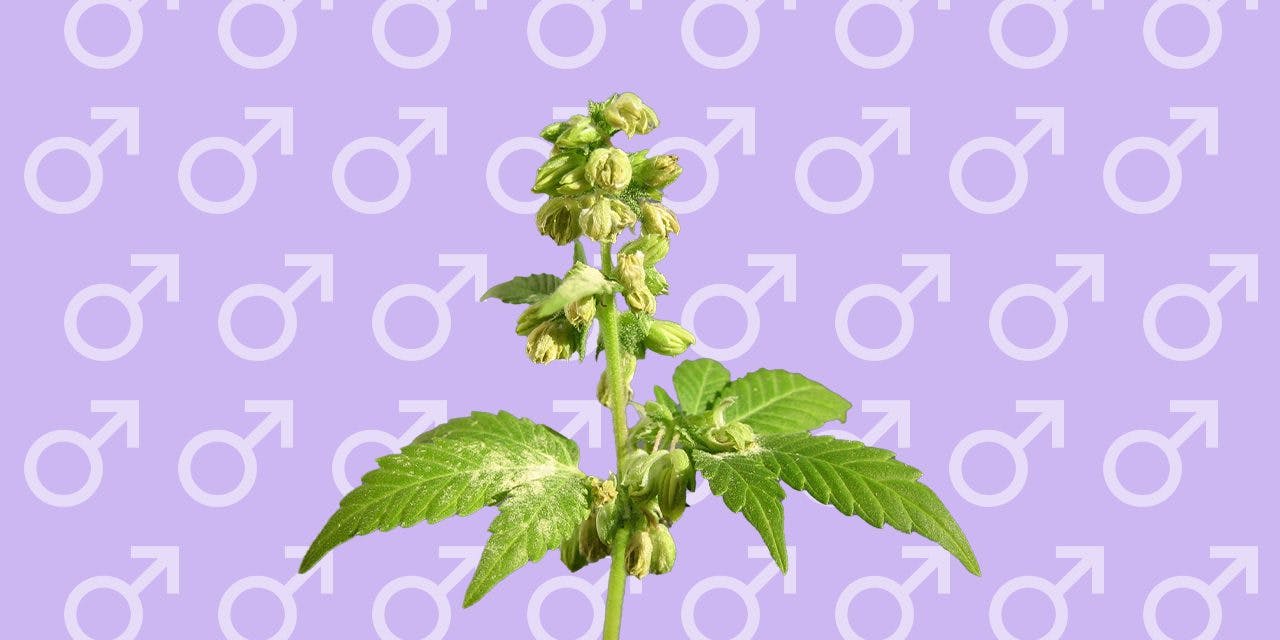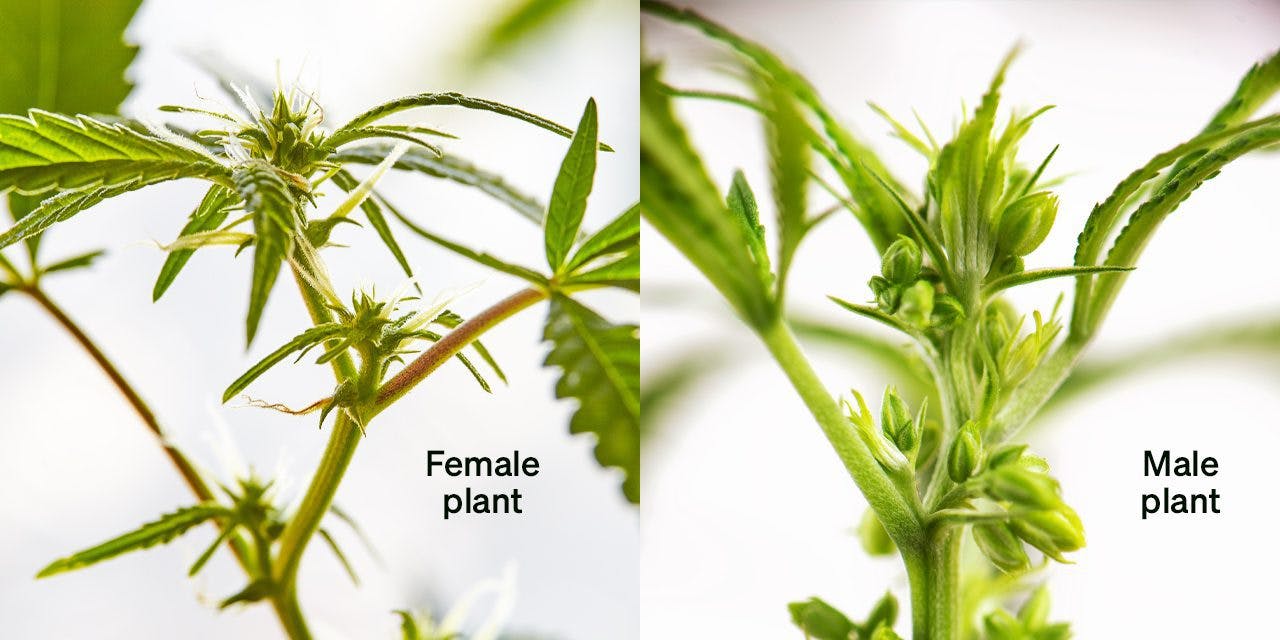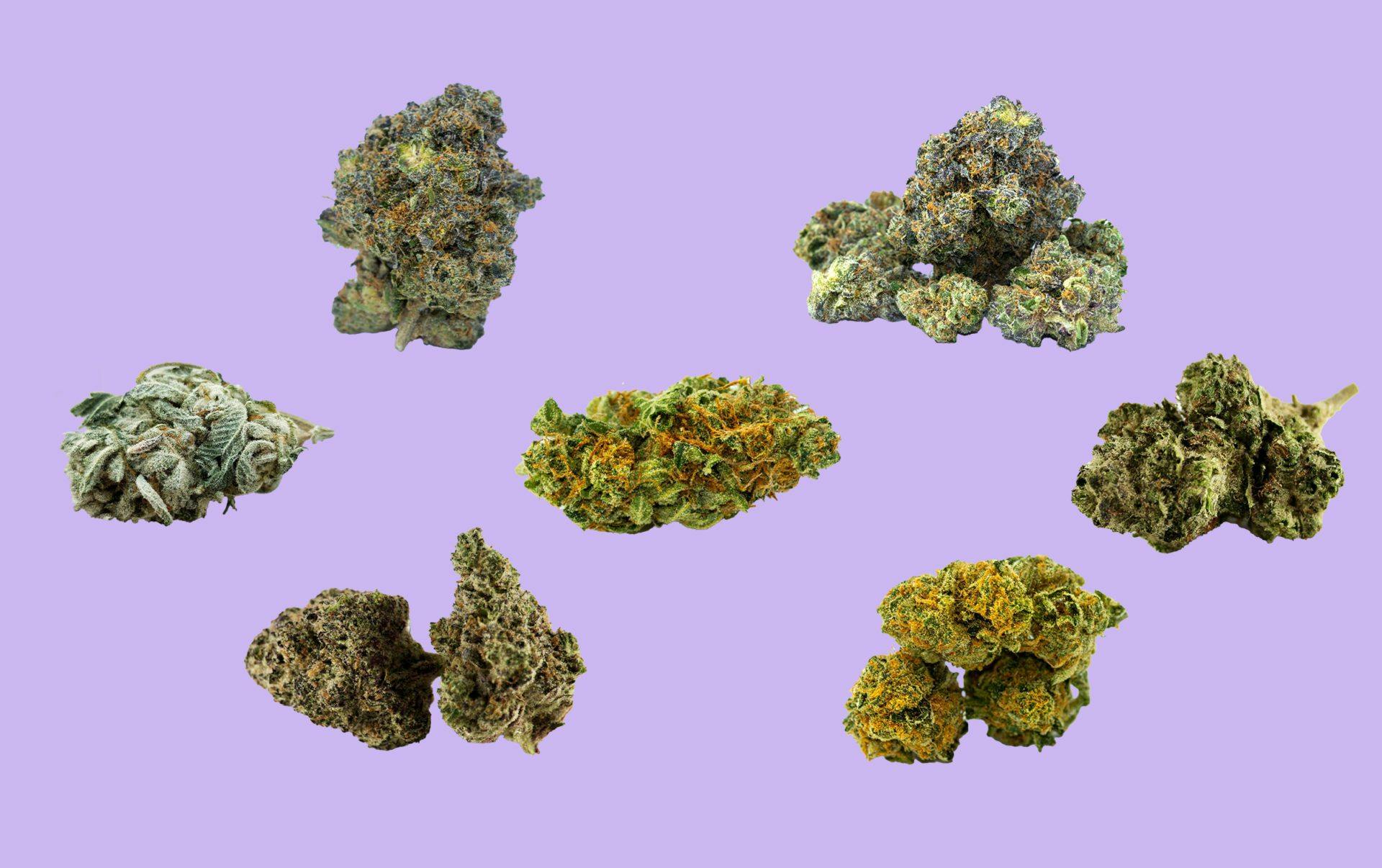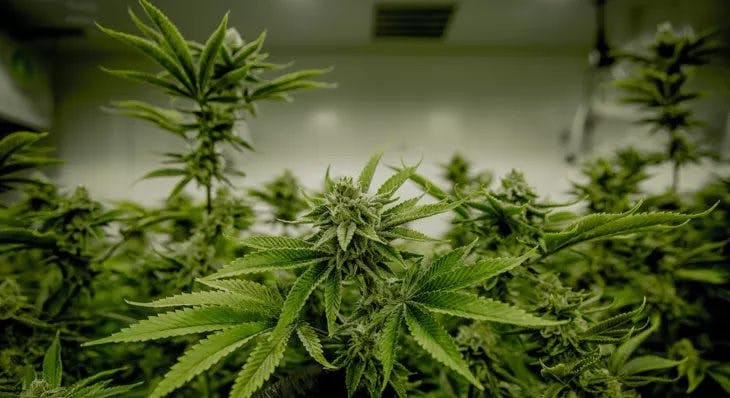Why Are Male Cannabis Plants Important?

Article written by

Tina MagrabiSenior Content Writer
Content reviewed by

Dr. Lewis JasseyMedical Director - Pediatric Medicine
Male cannabis plants serve an important purpose in cultivation.
When it comes to psychoactive cannabis, people have historically sought out female plants, often discarding male plants. Not only would male plants pollinate any nearby female plants in the vicinity (with the effect of producing seed rather than flower, which is not ideal unless you’re breeding), but they would also take up valuable time and space in small grow operations.
However, male cannabis plants can play a vital role in your cannabis cultivation and breeding programs. Learn about the crucial benefits of male cannabis plants and how to get the most out of them.
Get your medical marijuana card
Connect with a licensed physician online in minutes.
How Male Cannabis Plants Differ From Females
Before flowering, there are ways to tell if your plant is male or female. Once the vegetative stage is over and you start flowering your plants, they will usually display whether they are male or female within one to three weeks. Indoor grows tend to indicate their sex quicker. You can check the nodes or joints of plants to determine the sex. If there are sacs, the plant is male. If there are two hairs or bracts, the plant is a female. Other telltale signs of a male plant include thicker stalks and fewer leaves.
Male Cannabis Plant Anatomy
One way to recognize a male cannabis plant is by looking for what are called “pre-flowers.” During the vegetative stage, pre-flowers show up in fewer than four weeks in males, and longer than four weeks in females (this takes a little practice to distinguish). Pre-flowers can be found at the “V” where stems meet the stalk, particularly at the top of the plant, closest to the light. Female pre-flowers tend to have pistils or hairs, whereas males have small sacs.
Benefits of Male Cannabis Plants
Male cannabis plants have many essential benefits, including gene pool diversity, pest control and potency.
Gene Pool Diversity
Cannabis is dioecious, an evolutionary advantage in breeding programs. “Dioecy” is when a species has distinct male and female characteristics. Unusually among the plant kingdom, cannabis also displays this characteristic, although cannabis can also self-pollinate.
Some people have taken advantage of this self-pollinating aspect to retain the characteristics of a specific female plant, but this also means that future plants will be prone to hermaphroditism, which will eventually become a weakened gene pool from inbreeding.
Keeping good male plants can ensure a specific gene pool can stay alive for generations to come. This way, you can retain specific characteristics, like growth patterns and terpene profiles.
There’s a greater number of characteristics to choose from when you have more variety. Not only does this mean the gene pool is kept alive, but we can also start selecting for resistance to pathogens, growth rate, general health and even different cannabinoid and terpene profiles. This results in a variety of strains that have unique and specific effects and aromas.
Pest Control
Some outdoor breeders will use male cannabis plants not only to stay stocked up on seeds, but also to use terpenes that male cannabis plants produce, like pinene, limonene and borneol, which act as insect repellents for other crops. Male plants will not fertilize if they are kept separated from female plants (unless you handle pollen and handle a female plant immediately afterward).
Potency
Cannabis plants carry half of the genetics from the mother and the other half from the father. Although cannabinoid concentration is generally higher in female plants, this doesn’t mean that the fathers don’t have some amount of CBD, THC and other cannabinoids and terpene of their own.
Male leaves also tend to contain more cannabinoids than their flowers (the opposite is the case with female plants). This means that, yes, males produce their own resin glands, and can be used to make limited amounts of hashish when harvested in large quantities.
However, most breeders would be looking at the resin and cannabinoid-terpenoid content of a male plant in order to create strains that are disease-resistant, high-yielding and potent. Male plants can also breed strains for specific cannabinoids, essentially breeding a male plant that contains a high CBD concentration with a female plant that contains a high CBD concentration.
Download Our 7 Page Guide to Growing Cannabis
The Bottom Line
Male cannabis plants are an important part of any good breeding program. Male plants offer pest control and increased potency while contributing to gene pool diversity. While female plants are still the most desirable to cannabis cultivators, male plants definitely play their own vital roles.
Experience the potential therapeutic benefits of cannabis with a medical marijuana card. Apply online through Leafwell and complete the step-by-step process in your home state.
Get Your Medical Card
Connect with a licensed physician online in minutes.
Frequently Asked Questions
Do male hemp plants produce CBD?
Yes, male hemp plants do produce CBD, but female plants produce higher amounts of CBD. In addition, the strength of the CBD that male plants produce is lower than that of more potent female plants.
How many leaves does the male marijuana plant have?
Male marijuana plants have between five and nine leaves, generally fewer than female marijuana plants, which are generally towards the higher end of that range.
What happens if you don’t separate a male from female plant?
If you don’t separate a male plant from a female plant, then pollination can occur. The presence of male cannabis plants can overtake a crop and drain the female plants of energy, resulting in a much lower yield or destroying the crop entirely.



